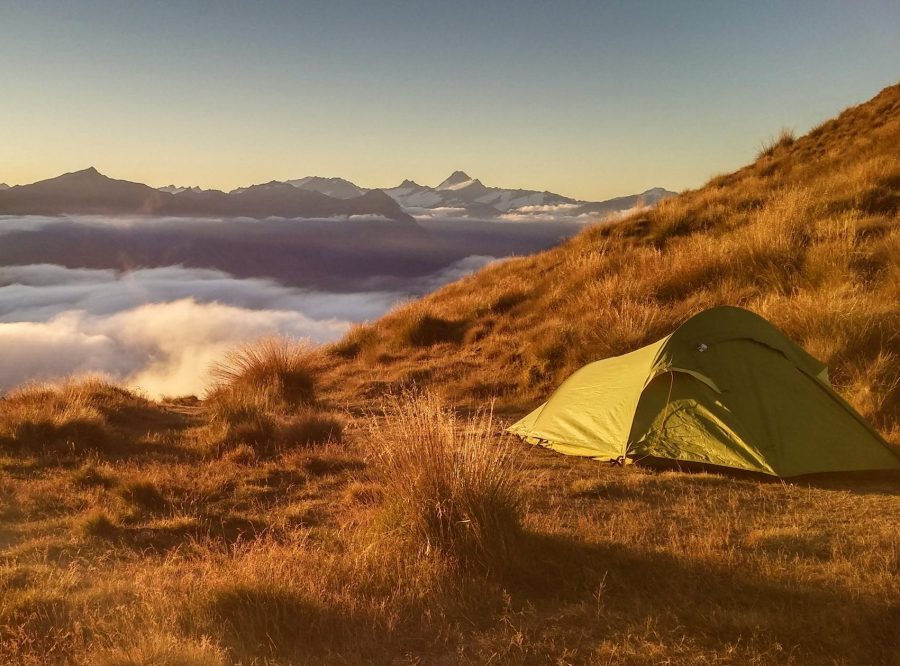Do you know your two-person tents from your tarps? Your shelters from your solos? Here, The Great Outdoors outlines the different types of tents and their benefits.
There are many types of tents designed and constructed to give you a good home for the night in the outdoors, depending on your needs. Good tent makers take many things into consideration including size, space, weight, pitching methods, and fabric properties. But here, we’ll look at the different designs and their benefits. Most of these shapes are available in sizes appropriate for backpacking and multi-day walking as one-person tents or two-person tents. Some can also come in larger sizes fit for purpose as spacious family tents.
Main image credit: Baptiste Valthier
The different types of tent shape
A-frame or ridge tents
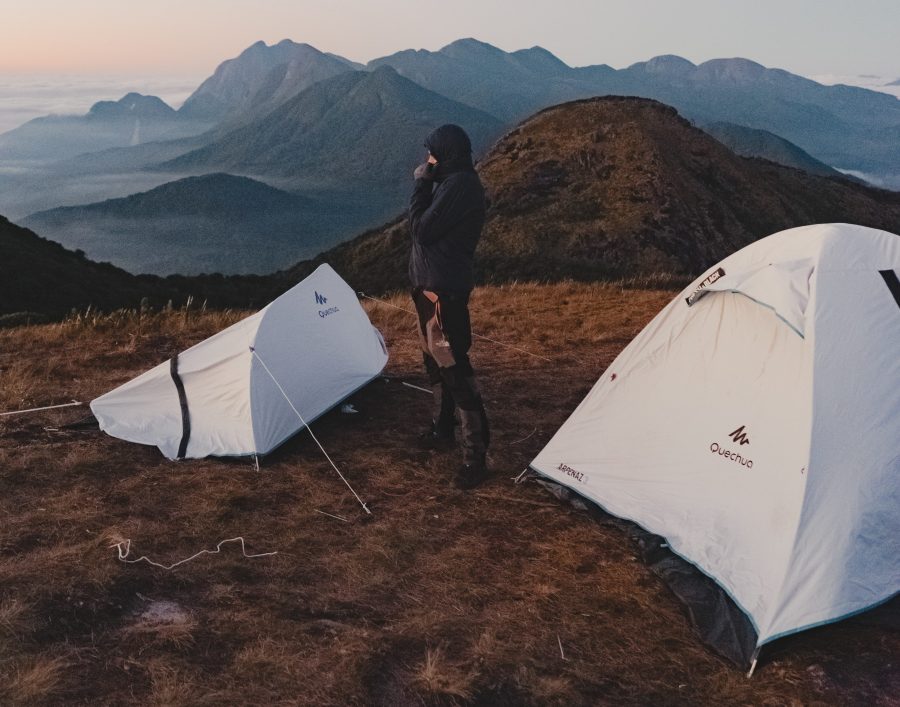
A ridge tent is pitched on the left next to a dome tent.
Credit: Juliano Ferreira
A-frames get their name from their shape; the triangular structure looks like the letter ‘A’ when erected. This is a classic shape which immediately comes to mind when you picture a ‘traditional’ tent. They are traditionally constructed with two vertical poles at either end and a horizontal pole in between which the canvas is stretched over. Nowadays, with fabric innovations, canvas and heavy poles are replaced by lightweight aluminum poles and polyester or nylon waterproof outer fly sheets.
The shape offers good runoff of water and simplicity to erect – and can sometimes be found in suspended tent types ideal for wet weather woodland camps. But, ground-level A-frames or ridge tents rely on well-placed guylines to keep them sturdy in adverse conditions so are often favoured by seasoned campers. They are also lacking in headroom and so are best suited to solo backpackers or two-person excursions.
Tunnel
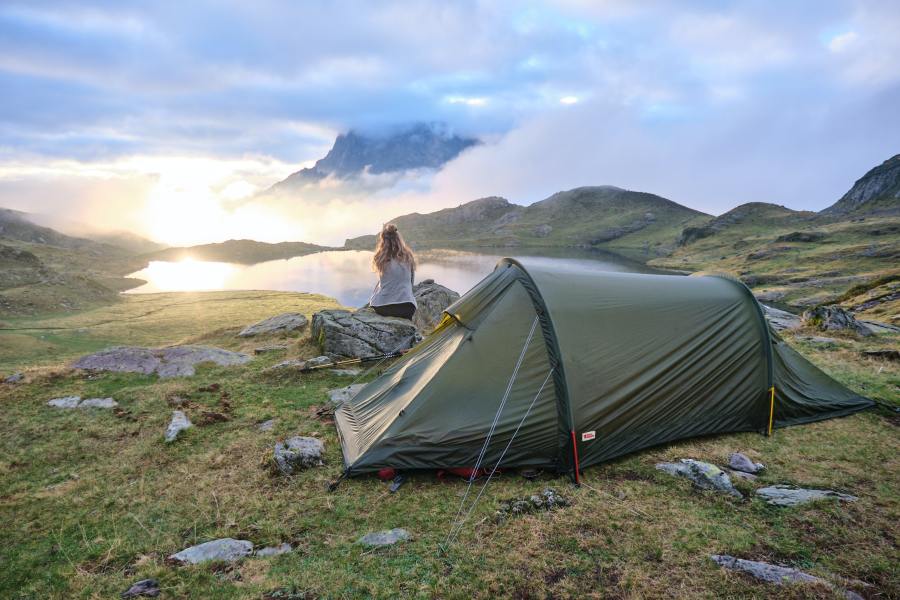
Credit: Wycher van Vliet
Tunnel tents feature a number of flexible poles that sit parallel to each other in an inverted U-shape over which the outer is stretched. Generally, the inner clips onto these poles.
You probably see a lot of tunnel tents on your travels, but the larger ones are mainly confined to campsites for a number of reasons – good and bad. Firstly, tunnel tents can be palatial, offering extensive liveable space and good headroom. Also, they are often designed with a porch area. Lastly, they are easy to put up and take down. For many, these factors make them ideal for big group camping trips.
However, you may not see many larger tunnel tents in the mountains as the shape is less stable in adverse conditions and its structural integrity relies heavily on guylines and placement in protected or sheltered areas dependent on wind direction. Rain can also pool on the outer in between poles.
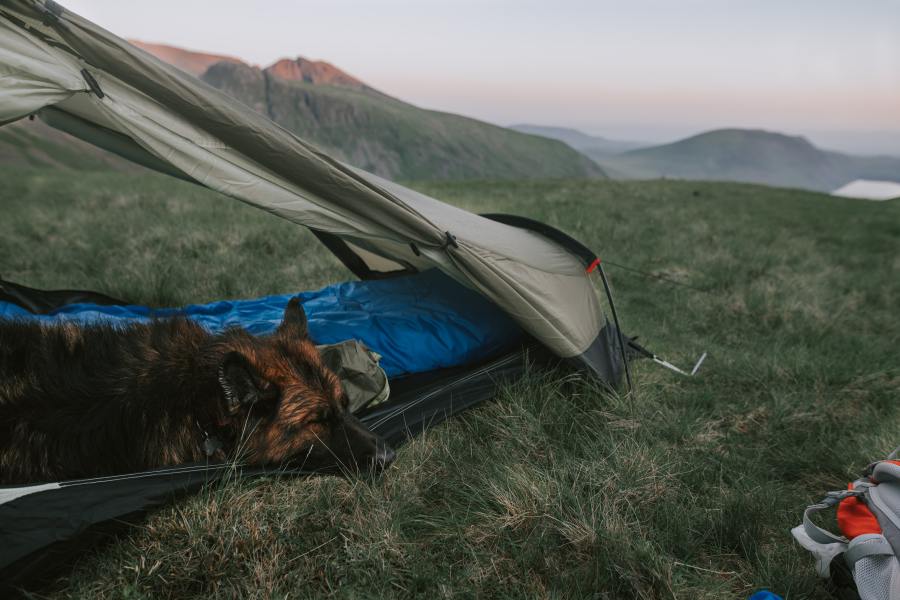
Credit: S Migaj
Smaller tunnel tents – or bivvy tents with a smaller pole loop at one end to create a low, more stealthy design – can be perfect for backpack camping in high places. On the other end of the scale, pop up tents often come in a tunnel (or dome) shape.
Dome
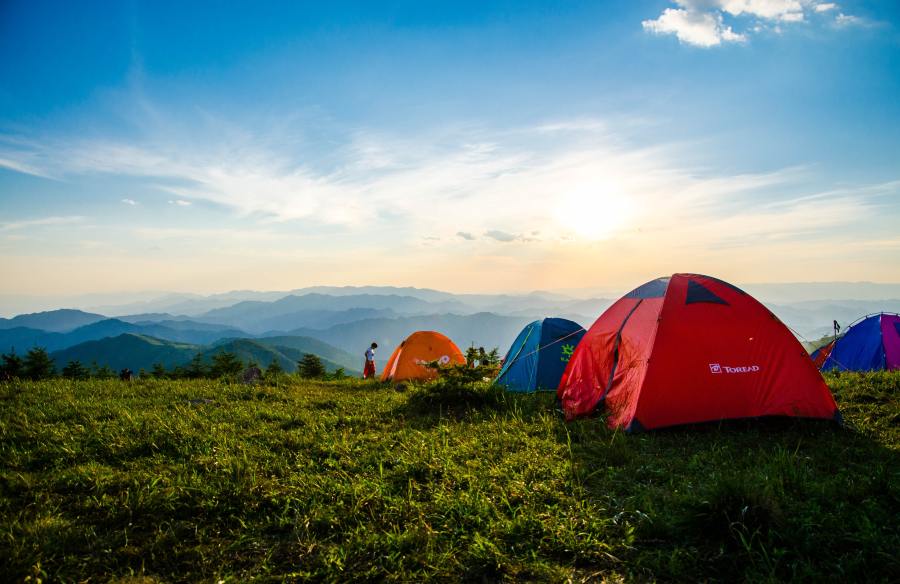
Credit: Xue Guangjian
Dome tents are also another shape you’ll see frequently. These are constructed with two poles that cross at the top of the tent in the middle of the footprint and bend to be anchored at four (usually) equally-spaced points. In most cases, the inner is clipped to these two poles and the outer is stretched over the top.
While dome tents don’t offer the greatest stability in winds – especially the larger they get – they offer good headroom for campers, are easy to put up, lightweight, pack down small and are generally inexpensive. Most also have the added benefit of porch areas to store backpacks.
Geodesic
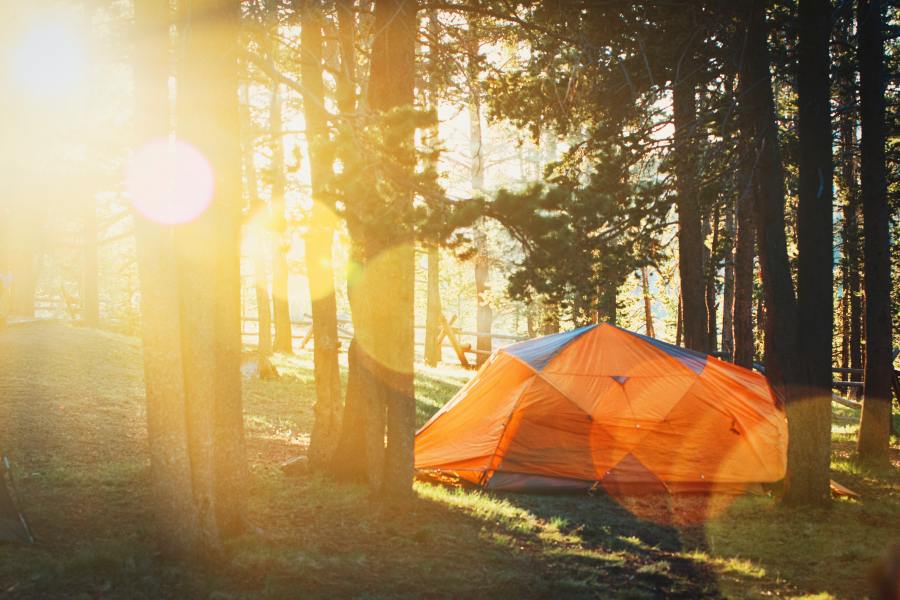
Credit: Todd Trapani
Much like the dome shape, geodesic tents feature flexible poles that cross each other – but with more poles for better stability. These are often deployed in adverse conditions for their structural integrity. This does make them harder to pitch but the efforts usually pay off, especially in winter.
Due to their durability and use in more extreme environments, they are often made smaller (for up to four people), constructed with lightweight materials and thus, are more expensive. If you want eye-watering luxury and a quick pitch, take a look at some of the inflatable geodesic designs on the market.
Cabin
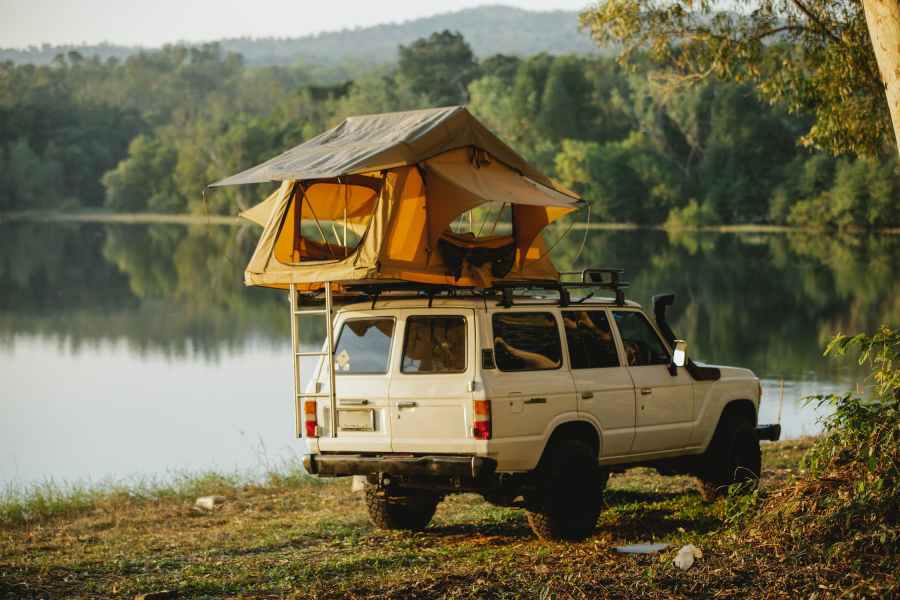
A lakeside rooftop tent pitch.
Credit: Uriel Mon
Aluminium poles that fit together create the frame of most cabin tents, designed to look like a home in the outdoors often with standing room and plenty of liveable space perfect for big groups. In fact, the construction of these tents lends itself to large, multi-room setups more at home in campsites.
The height of the design makes them less practical for high places as they lack stability in adverse conditions. While they are quite affordable, they’re best suited to fair-weather summertime camps.
On the smaller, more transportable side of cabin tents, rooftop tents are often constructed in this shape.
Pyramid
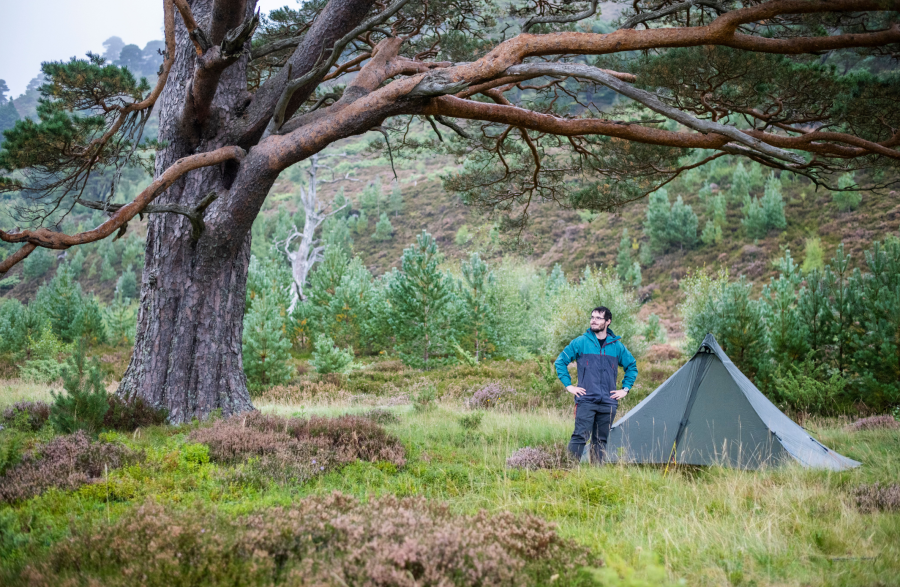
Alex Roddie on a Glen Feshie camp.
Credit: James Roddie
Lightweight aficionados will be familiar with the pyramid tent shape. While the design originated with the single, wooden central pole over which thick tarp can be draped and staked down at the edges as in tipis and bell tents, innovations have taken the simple setup and stability in the elements and brought this to backpacking.
Now, almost tarp-like pyramid tents can be built with lightweight materials and taken into the wild. The single pole setup makes them easy to set up quickly and the shape can withstand rain and snow and winds. However, headroom and space are limited and pyramid tents often don’t come with a groundsheet.
Now you understand the different types of tent, you can elevate your gear skills by learning how to pitch a tent and how to clean a tent. If you’ve still not found the right fit for your camping adventures, why not look into the alternatives to tents.

